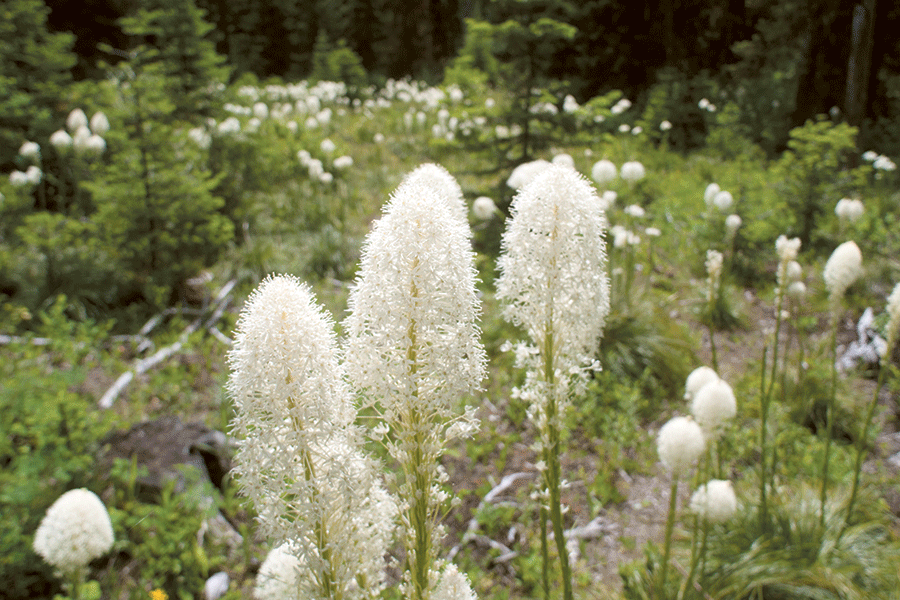A deal to protect a 3,000-acre swath of forest in Whitefish’s Haskill Basin is making strides with strong federal support, but city officials say it will require a stamp of strong community support before the conservation easement is a done deal.
The Haskill Basin Watershed Project aims to protect more than 3,000 acres in Haskill Basin near Whitefish, on property owned by the F.H. Stoltze Land and Lumber Co. and located beside Whitefish Mountain Resort on Big Mountain.
Last year, Stoltze and the Trust for Public Land, a nonprofit land conservation organization, reached a deal that would keep the land permanently protected for water, wildlife and recreation uses, while still allowing Stoltze’s sustainable timber management to continue. The project enjoys support from Montana’s congressional delegation, as well as Whitefish’s mayor and city council.
Proponents of the deal say the land is highly vulnerable to the pressures of development, holds a trove of hiking, biking and skiing trails, is home to a suite of wildlife, and is the source of 75 percent of the municipal water supply in Whitefish.
The conservation easement was announced last June, but hinges on funding, and project managers were on hand at a June 17 open house to discuss the price tag.
Given the property’s high development threshold, Stoltze values the land at $20.6 million, but the company has offered to sell it for $17 million, according to Alex Diekmann, project manager for the Trust for Public Lands, which is working to raise money from federal programs, private donors and public funding sources in order to bring the deal to fruition.
The Forest Service ranks such projects for funding through its Forest Legacy Program, which awards grants to states to purchase permanent conservation easements, and gave the Haskill Basin Watershed Project its No. 1 spot, positioning it to receive $7 million in Legacy Project funding.
The top ranking gives the project a significant boost toward raising the $17 million needed to buy the development rights from Stoltze by the end of 2015, leaving a balance of between $8 million and $9 million.
Whitefish Mayor John Muhlfeld said the city is exploring several avenues of funding, including private and philanthropic contributions, as well as public measures such as a general obligation bond that would go to voters for approval, and a water revenue bond.
Diekmann praised the timber company’s reputation as a good neighbor, and said the partnership with Stoltze is ideal.
“They are widely regarded as one of the best operators in the industry,” he said of the family-owned company, which has been around for a century. “I have done a lot of work with timber companies and I can tell you these guys are some of the best operators that I have come across.”
For years, conservation groups and city officials have recognized the development pressure that could bear down on the Haskill block and, until recently, have operated under a good-faith agreement with the Stoltze family, who for more than a century has maintained its commitment to managing the parcel as a working forest, rather than leveraging it into a revenue-rich development deal.
Paul McKenzie, the lands and resource manager for Stoltze, said there are no plans to sell the land, but that its development potential has only grown along with the skyrocketing property values, saying that Whitefish is growing at a rate three times higher than the state average.
Even though Stoltze is widely recognized as an ideal steward of the land, its Haskill property is flanked by high-ticket development projects like the Iron Horse golf course, the Lookout Ridge subdivision, the Ptarmigan Village condominiums and Whitefish Mountain Resort.
It doesn’t take a stretch of the imagination to envision Haskill Basin bristling with condos and trophy homes.
Stoltze has endured difficult times before, particularly in the wake of the collapsing housing market and plummeting lumber prices. The company lost three mills in the span of a decade, shuttering facilities in Dillon, Darby and Utah, which it did only after losing access to federal and private harvest lands.
Multiple generations have supported Stoltze’s legacy of innovation and access, McKenzie said, and while he sees no sign of that changing under the current guard, he noted that there’s always the chance, and that Stoltze has sold 1,200 acres in past two decades.
“Everything so far has been done on a handshake deal,” he said of the company allowing hiker and biker access. “It might have been OK to do that for the past 100 years but as a city and a company we should legitimize this amazing place.”
“It is a lot of money that we have to raise to make this happen but it is a small price for something to protect as important as this into perpetuity,” Diekmann added.
